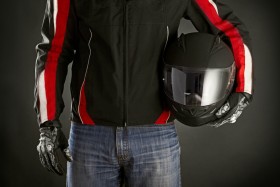How to Find the Right Motorcycle Helmet For You

Even if the law doesn’t require you to wear a helmet while riding a motorcycle, helmets are essential for keeping motorcyclists safe on the road. In the event of a motorcycle accident, a good helmet can save your life. But with all the different types of motorcycle helmets on the market, it’s hard to know where to even begin.
To get the most protection, look for a helmet that has been approved by the Department of Transportation (DOT). Helmets approved by the DOT will have a label affixed to it signifying it has been certified by the DOT. The DOT has a set of standards for motorcycle helmets that consider factors such as how much energy a helmet can absorb and how much force its fasteners can withstand. All models of motorcycle helmets on the market are tested by the DOT and ones that are found to meet their standards are given permission to bear the DOT certification label. You might also see helmets that are marked as certified by organizations such as Snell or the American National Standards Institute (ANSI). Snell and ANSI are independent, non-profit organizations who also have standards for motorcycle helmet safety.
However, it’s important to remember that DOT approval is not necessary for a helmet to be available to sale to the general public. In many cases, helmets that aren’t approved by the DOT, Snell, or the ANSI are novelty helmets or other helmets that may look really cool, but in reality offer little to no real protection. If a helmet feels very light, that’s a good indicator a helmet doesn’t offer much protection. A helmet with adequate protection, according to the DOT, will likely weigh several pounds.
Motorcycle helmets come in a variety of styles. Skullcap helmets are exactly what they sound like: they only cover a motorcyclist’s head and don’t offer a great deal of protection. Half-face helmets offer more protection than a skullcap and cover the top and sides of a rider’s head and often come with a visor. Full-face helmets offer the most protection a motorcyclist can get from a helmet. They cover the top of a rider’s head, the sides of their head, face, and jaw and also come with a visor.
Once you’ve found a helmet approved by the DOT, you need to make sure your helmet fits you properly. Although you can buy motorcycle helmets online, it’s really best to shop for them in person so you can try them on. Helmets come in a variety of shapes and sizes and you’ll want to ensure a proper fit so you will not only be comfortable, but so you get the most protection your helmet has to offer. A helmet should fit snugly enough to stay put if you shake your head from left to right or up and down, even without the chin bar left undone. A too tight helmet is simply not comfortable and one that isn’t tight enough is likely to come off in the event of an accident. When trying on helmets, leave them on for a good 15-20 minutes to get a good sense of how it will feel. A properly fitting helmet should exert even pressure on your face and head with no spots of high pressure, particularly around the forehead or crown of your head.
When looking for a full-face helmet, you need to be sure the visor leaves you with an adequate field of vision. You should be able to see at least 105 degrees to the left and the right.
Our personal injury lawyers at the Law Offices of Goodwin & Scieszka are able to handle other vehicle accidents like car accident claims and truck accident cases. Contact us to see how we can help you receive fair compensation.






